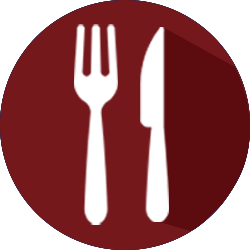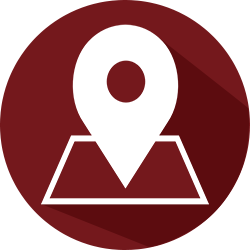With a little less than a two-hour drive from Phoenix, we won’t blame you if you expect Tucson to be more of the same stuff that the state capital is made of. If you did, then you’d be wrong. In Tucson, you’d see more remnants of the Old West, giving the city a certain charm that earns it the moniker “Old Pueblo.” Depending on what you’re looking for out of life, moving to Tucson might be just the right decision for you and your family!
To help you in this transition, our movers in Tucson created this comprehensive moving guide for you to get to know Tucson on an intimate level. From the job market to the best neighborhoods to nightlife scene, we have you covered. Check it out below:
Chapter 1: Things to Know
Chapter 2: Local Utilities
Chapter 3: Useful Phone Numbers
Chapter 4: Cost of Living
Chapter 5: What’s The Weather Like?
Chapter 6: How’s The Food?
Chapter 7: What Are The Locals Like?
Chapter 8: Getting Around – Transportation
Chapter 9: Colleges & Education
Chapter 10: Local Job Market
Chapter 11: Best Places to Live
Chapter 12: Family Fun
Chapter 13: Parks & Landmarks
Chapter 14: Nightlife
Chapter 15: Things to Do
Chapter 16: Additional Reading
Chapter 1
Things to Know
Tucson was founded on August 20, 1776, but Paleo-Indians have already called the area their home as early as 12,000 years ago. Since then, missionaries and Mexican settlers have come and gone the Tucson’s boundaries, adding to its rich history and culture. Here, you will find an abundance of Saguaro cacti and collections of traditional Catholic art spread out in its variety of museums.
Today, Tucson is a diverse place with a great manifold of things to do and sights to see. It is home to all kinds of people, from students to budding entrepreneurs and families to corporate workers. Unlike Phoenix, Tucson finds the splendors of nature just around its corner, with the Coronado National Forest, which is home to Mount Lemmon, just a half hour’s trip from the city center.

- Tucson History
- 45 Reasons to Move to Tucson
- Living in Tucson: 21 Things You Need to Know First
- Some Interesting Fun Facts About Tucson, Arizona
- Moving to Tucson: Things You Need to Know
Chapter 2
Local Utilities
Both private and public organizations provide basic utilities and services to the Tucson metro area. Power is served by Tucson Electric Power, while water and gas are provided by the Metro Water District and Southwest Gas, respectively. Major telecommunications providers are likewise available to serve Tucson residents, too.
On average, the cost of utilities for one month comes up to $170 for a household of two people in a 85m2 flat.

- Public and Private Utilities
- List of Tucson Utility Services
- Tucson Utilities Connection Information
- Tucson Electric Power – Moving? Follow These Simple Steps
- Tucson, AZ TV Providers
Chapter 3
Useful Phone Numbers & Websites in Tucson
When moving to Tucson, you’d do well by arming yourself with important emergency and non-emergency phone numbers. As a newcomer, your first stop should be the official website of the City of Tucson, which has all the information you’ll need to live and work in the city. Here, you’ll also find telephone numbers to the police and fire departments, medical services, and other hotlines. The local government has an anonymous tip hotline for reporting crime, too: 88-CRIME.
To keep up with news and events happening around Tucson, check out local news outfits KGUN-TV and Arizona Daily Star.

- City of Tucson – Official Website
- City of Tucson Department Directory
- Emergency Numbers
- Arizona Daily Star
- KGUN 9
Chapter 4
Cost of Living
Residents appreciate living in Tucson in part because of its beautiful scenery and year-round great weather, but also,more importantly, of how relatively cheap it is to live here. On average, the cost of living here is about 6% less than that of national numbers. This applies to most aspects of everyday living, except for healthcare, which is just slightly more expensive in Tucson.
Average salary figures for employees in the Tucson workforce are at $46,315, while median home values are at $179,700. Renters who are thinking of moving to Tucson will rejoice at the rental values! Renting a studio apartment costs about $346 cheaper than average rent elsewhere in the country, while a one-bedroom is about $188 cheaper.

- Cost of Living in Tucson: What Homebuyers Need to Know
- Average Salary in Tucson, Arizona
- Tucson, Arizona Cost of Living
- The Cost of Living in Arizona
- Cost of Living in Tucson
- Tucson Home Prices & Values
- Rent Trend Data in Tucson, Arizona
Chapter 5
How’s The Weather?
We’ve already mentioned that living in Tucson comes with the priceless perk of awesome weather all year round, but here are the numbers to prove it. Tucson residents get to enjoy the sun 350 days annually, more sunshine than any other city in the U.S. gets!
Think this can only mean even more unbearable Arizona heat? Surprise, surprise: no! While it does have hot summers and temperature winters, Tucson, because of its higher elevation, is actually about 10 degrees cooler on average than neighboring Phoenix.
Except during the summer months when temps are consistently above 70s, nighttime temps in Tucson mostly stay above 50F. Tucsonans very rarely experience frost though! On average, there are 6 days in the winter when temperatures reach freezing levels.

- Climate for Tucson, Arizona
- Quora: How unpleasant is Tucson during summer compared with Phoenix and the Southeast US?
- Tucson Temperatures: Averages by Month
- Tucson, AZ Air Quality
- Tucson, AZ Interactive Weather Radar Map
Chapter 6
How’s The Food?
Unsurprisingly, because of how close it is to Mexico, Tucson boasts of the best Mexican food to be found in the whole of Arizona. There’s an abundance of Mexican fare to be had in the city’s culinary scene, with restaurants ranging from hole-in-the-wall establishments to fancy fine dining options.
But don’t think that Tucson only has heritage food and Mexican food to offer your stomach. There are charming bistros, neighborhood cafes, and Southwestern style comfort food to satisfy just about any palate.
In fact, Tucson has the distinction of being the first US city to be a UNESCO City of Gastronomy in 2015. The more innovative chefs in the area turn to the desert to get ingredients such as agave, cactus pads, amaranths, chiltepin, and mesquite pods.

- Why Tucson is the Best Food City in Arizona
- Where to Eat and Drink in Tucson, Arizona
- Tucson Foodie
- Tucson Becomes an Unlikely Food Star
- Eating the Old Pueblo: 10 Best Restaurants for Exploring the Tucson Food Scene
- Are these the 10 best restaurants for exploring Tucson’s food scene?
Chapter 7
What Are The Locals Like?
With a metro area population that’s one million-strong, Tucson is the second-most populous city in the whole of Arizona, eclipsed only by the capital Phoenix. A little over 40% of its inhabitants are Hispanics, which should be a little surprising to those who think of Arizona as a predominantly white state.
Even with the big city population statistics though, many of its residents feel that Tucson still has that small town vibe. No one is ever truly a stranger when you live here. You’re either separated only by two degrees or instantly bonded by certain commonalities.

- 29 Things People From Tucson Have To Explain To Out-Of-Towners
- 10 Tucson Stereotypes That Are Completely Accurate
- Arizona’s Hispanic population grows in 2010 Census
- U.S. Census Bureau QuickFacts: Tucson City, Arizona
- 17 Signs You’re From Tucson, AZ
- 20 Signs You Grew Up in Tucson, Arizona
Chapter 8
Transportation
Tucson is proudly a pedestrian- and bike-friendly city. One will find that walking along its neighborhoods is a pleasurable and safe experience. The downtown areas are also structured almost like a grid, bringing ease of navigation. Those who prefer to bike to and fro can take advantage of the city’s 630-mile bike paths and the TuGo Bike Share program.
If you prefer to travel with modern conveniences, however, you’ll have the city’s public transportation system to rely on. The Sun Link Streetcar, which runs every 10 to 30 minutes depending on the demand, connects most of the major spots in the Tucson’s central districts. There’s the Old Pueblo Trolley and the Sun Tran, too, for trolley and bus services in the metro area.
Some transportation downsides in Tucson include the lack of a freeway system and expensive cab fares. But residents can take refuge in the availability of ride-hailing apps such as Uber and Lyft and relatively cheaper (if not free) parking options in Tucson!

- Getting Around
- Getting Around Tucson
- Getting Around in Tucson
- Parking
- Tugo Bike Share
- Sun Tran
- How to Get Around in Tucson, Arizona
Chapter 9
Colleges & Education
With an average student-to-teacher ratio of 18:1, you can be sure that your child will get the care and attention they need from Tucson’s educational system. There’s a great many options to choose from, too – the city’s public, private, and charter schools each, in their own way, provide a holistic and stimulating academic experience to their student bodies. The Tucson Unified School District, the city’s largest, enrolls 6% of Tucson’s population, the second highest enrollment of any Arizona school district.
The globally-ranked University of Arizona also has its main campus here. Its enrolment numbers are over 40,000, a third of which are undergraduates, spread out among its 19 colleges and schools.

- 3 Tucson-area schools ranked among best in nation
- Study in Arizona
- Tucson AZ School Ratings and Reviews
Chapter 10
Local Job Market
If you’re in the education and health service industries, then you’re in luck! The job market in Tucson is in your favor – these sectors are among the fastest growing in the metro. Other fields that continue to enjoy high demand are the construction trades and computer science.
In Tucson, the three largest employers are The University of Arizona, Raytheon, and Davos-Monthan Air Force Base. Collectively, they enlist a wide variety of professions in its workforce.
The local unemployment rate corresponds to the national statistics, with annual average salary figures below that of the country’s average. As of 2017 data, the average hourly wage of Tucson workers is $22.18.

- Tucson, Arizona Job Market
- Tucson Career Outlook: Overview of Hot Careers in Tucson, Arizona
- Job market looking good for Tucson
- UA economist predicts more job growth in Tucson for 2018
Chapter 11
Best Places to Live
No matter what your social standing is or what life stage you are in, there’s a neighborhood in Tucson that you can call home.
For families, Sam Hughes might be an ideal choice. There’s an assortment of parks, shops, and restaurants here for every family member to enjoy. The tree-lined homes you can find here are often of the craftsman style or of territorial architecture, perfect for any American family. Parents would love to know that this neighborhood’s schools enjoy ratings that are 15% above the city’s average.
The Catalina Foothills neighborhood, on the other hand, attracts those in the higher income brackets. Luxurious amenities are abound here: relaxing spas, posh golf courses, and exclusive retreats.
For the young and sophisticated, Downtown Tucson is the place to be. Like much of the city’s spirit itself, the city center blends the old with the new. You’ll find Tucson’s historic remnants casually sitting next to modern attractions here. Restless residents of Tucson can satiate their appetite for activity here with the downtown area’s offerings of music, museums, boutiques, and culinary delights.

- Safest Neighborhoods in Tucson for Families
- 5 Great Neighborhoods in Tucson
- The 10 Best Tucson, AZ Neighborhoods To Live In For 2019
- These Are The 11 Best Tucson Suburbs to Live In
Chapter 12
Family Fun
Young families would love raising their kids in Tucson, Arizona because there are lots of family-friendly activities to do within the city.
A must-stop is the Reid Park Zoo where visitors of all ages can see over 500 animals split among its four zones. One highlight, in particular, is the African Animals zone, which features lions, giraffes, and a herd of African elephants (including the first ever elephant born in Arizona), among many others. During the summer, the zoo host safari nights with live entertainment, animal shows, and great food.
There’s also the Family Fundays at the Heirloom Farmers’ Market that occurs on each month’s first Friday. Aside from the farmers’ market thrust to promote local food and agriculture, Family Fundays feature games and activities that appeal to children, such as face painting and carnival games.
Another local attraction that Tucson residents can’t miss is the Arizona-Sonora Desert Museum. Here, you can get a closer look at hummingbirds at the aviary, witness (from a safe a distance) a real mountain lion, and stroll through over 21 acres of desert gardens.

- 15 Reasons Why Moving to Tucson is Great for Families
- 18 Wonderful Places to Visit and Things to Do in Tucson with Kids
- 10 Things To Do in Tucson with Kids
- Things To Do in Tucson with Kids
- Tucson With Kids: 10 Fun Things to Do With the Whole Family
Chapter 13
Parks and Landmarks
According to the city’s Parks and Recreation Department, Tucson has 128 parks and 22 rec centers for its citizens to enjoy. Among these is Reid Park, home to the aforementioned zoo, which is a constant favorite among cyclists, joggers, and nature-lovers. For those who prefer a more rugged outdoor experience, Saguaro National Park’s visitor centers allows for hiking trails, sightseeing, and horseback riding. If you’d prefer to venture a little outside Tucson, a great day trip would be to Kartchner Caverns State Park, which features the world’s longest stalactite formation.
True to its Old West heritage, the city works hard in promoting and preserving its historical landmarks. Highlights include the Pima County Courthouse, a 1927 Spanish Colonial-style building, and the ‘A’ Mountain Sentinel Peak, a great vantage point on which to see the beautiful Tucson landscape (and there’s a 19th century house on its base, by the way!).

- City of Tucson Parks and Recreation
- Arizona’s Parks and Monuments
- 10 Best Parks in Tucson: Exploring the City’s Wide Open Spaces
- Nature Attractions
- Historic Landmarks
- City Historic Landmarks
- City of Tucson – Parks
- Tucson’s 6 historic landmarks
Chapter 14
Nightlife
Not to be left behind by Phoenix, Tucson provides lots of possibilities for those who prefer taking the city on after dark. From sophisticated wine bars to raunchy comedy shows and everything in between, there are bars and clubs (usually open until 2am) to suit every mood.
Those with a soft spot for western-style havens would enjoy the selection of cowboy-themed saloons and restaurants the city has to offer. On the flip side, you can always go for Latino hotspots with salsa dancing, mariachi music, and flamenco around the midtown area.
A longtime icon in the local music scene is downtown’s Club Congress. Lovers of live music flock here weekly to bang their heads and sway to alternative and rock concerts.
If you’re part of the younger crowd though, you’d be more likely to let loose in the University of Arizona Main Gate area, Fourth Avenue, and Congress Street downtown. Here, there’s a plethora of places for chilling and for partying that college students and young adults can feel right at home in.

- Nightlife
- Desert Nights: 10 Best Nightlife Spots in Tucson
- 9 Best Things to Do at Night in Tucson, Arizona
- Best Tucson, AZ Nightlife
Chapter 15
Things to Do
There are some who like to point out that Tucson is not as exciting as Phoenix. It’s truly a case of “different strokes for different folks.” If you’re looking for non-stop activity and a faster pace of life, then Phoenix is a good match for you. But if you lean more towards the serene, away from the hectic, then Tucson is your paradise.
Tucson is more for the enthusiasts of the culture and the outdoors. History and tradition can be witnessed firsthand from the historical landmarks and beautiful architecture scattered throughout and the wide varieties of food to be had. Hiking trails are always within reach, and you don’t have to go far to see breathtaking mountain views and captivating flora and fauna.

- 25 Best Things to Do in Tucson (AZ)
- Best 37 Fun Things to Do & See in Tucson, Arizona – Activities & Attractions
- 18 Cool, Hidden, and Unusual Things to Do in Tucson, Arizona
- 15 Fun & Free Things to Do in Tucson
- 10 Must Do’s in Tucson, Arizona
Chapter 16
Additional Reading
If you haven’t had your fill of Tucson from all of the above resources, check out these links to learn more. There’s a lot of fascinating trivia that shine a light on what exactly makes Tucson tick. They go beyond the figures and the numbers to offer a preview of what the positive and negative aspects of Tucson life can be.

- 10 things you wish you’d known before moving to Tucson
- Things No One Tells You Before You Move to Tucson
- 20 Things You Need to Know Before Moving to Tucson
- Safe and Dangerous Places in Tucson
- The Difficulties of Living in Tucson
- 7 Survival Tips for Moving to Southern Arizona
Closing
We hope that equips you with everything you need to survive and thrive in Tucson. Moving to Tucson, or to any new city, seems overwhelming, but we wanted to make it easier for you. If you liked this moving guide, feel free to share it with your friends and family. And if you’re ready to make that big step, call on Low Budget Movers to help you out on moving day!
Are you thinking about moving to another city instead? We have guides to moving to Glendale, moving to Phoenix, moving to Scottsdale, moving to Mesa, and moving to El Paso.
